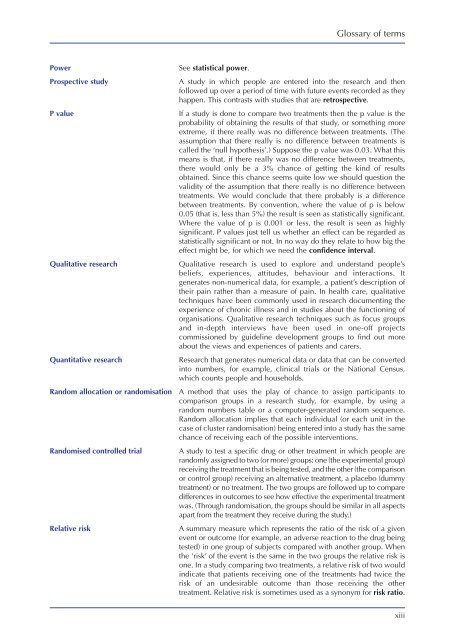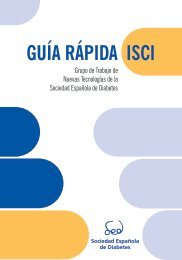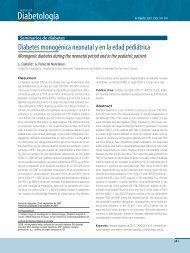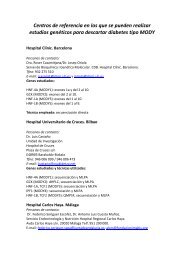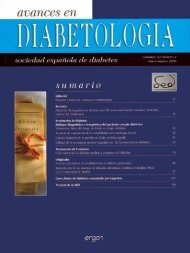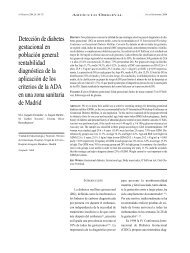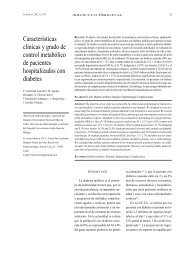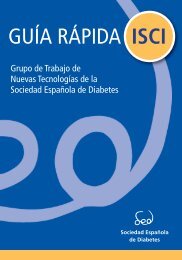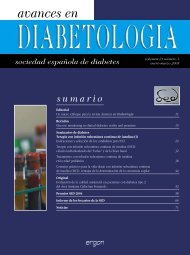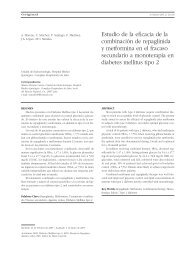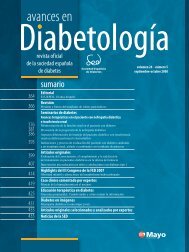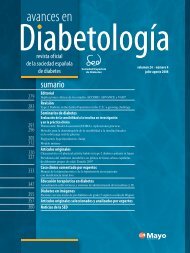You also want an ePaper? Increase the reach of your titles
YUMPU automatically turns print PDFs into web optimized ePapers that Google loves.
Glossary of termsPowerProspective studyP valueQualitative researchQuantitative researchRandom allocation or randomisationRandomised controlled trialRelative riskSee statistical power.A study in which people are entered into the research and thenfollowed up over a period of time with future events recorded as theyhappen. This contrasts with studies that are retrospective.If a study is done to compare two treatments then the p value is theprobability of obtaining the results of that study, or something moreextreme, if there really was no difference between treatments. (Theassumption that there really is no difference between treatments iscalled the ‘null hypothesis’.) Suppose the p value was 0.03. What thismeans is that, if there really was no difference between treatments,there would only be a 3% chance of getting the kind of resultsobtained. Since this chance seems quite low we should question thevalidity of the assumption that there really is no difference betweentreatments. We would conclude that there probably is a differencebetween treatments. By convention, where the value of p is below0.05 (that is, less than 5%) the result is seen as statistically significant.Where the value of p is 0.001 or less, the result is seen as highlysignificant. P values just tell us whether an effect can be regarded asstatistically significant or not. In no way do they relate to how big theeffect might be, for which we need the confidence interval.Qualitative research is used to explore and understand people’sbeliefs, experiences, attitudes, behaviour and interactions. Itgenerates non-numerical data, for example, a patient’s description oftheir pain rather than a measure of pain. In health care, qualitativetechniques have been commonly used in research documenting theexperience of chronic illness and in studies about the functioning oforganisations. Qualitative research techniques such as focus groupsand in-depth interviews have been used in one-off projectscommissioned by guideline development groups to find out moreabout the views and experiences of patients and carers.Research that generates numerical data or data that can be convertedinto numbers, for example, clinical trials or the National Census,which counts people and households.A method that uses the play of chance to assign participants tocomparison groups in a research study, for example, by using arandom numbers table or a computer-generated random sequence.Random allocation implies that each individual (or each unit in thecase of cluster randomisation) being entered into a study has the samechance of receiving each of the possible interventions.A study to test a specific drug or other treatment in which people arerandomly assigned to two (or more) groups: one (the experimental group)receiving the treatment that is being tested, and the other (the comparisonor control group) receiving an alternative treatment, a placebo (dummytreatment) or no treatment. The two groups are followed up to comparedifferences in outcomes to see how effective the experimental treatmentwas. (Through randomisation, the groups should be similar in all aspectsapart from the treatment they receive during the study.)A summary measure which represents the ratio of the risk of a givenevent or outcome (for example, an adverse reaction to the drug beingtested) in one group of subjects compared with another group. Whenthe ‘risk’ of the event is the same in the two groups the relative risk isone. In a study comparing two treatments, a relative risk of two wouldindicate that patients receiving one of the treatments had twice therisk of an undesirable outcome than those receiving the othertreatment. Relative risk is sometimes used as a synonym for risk ratio.xiii


